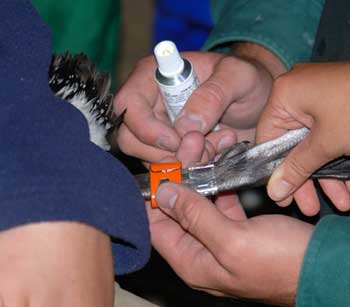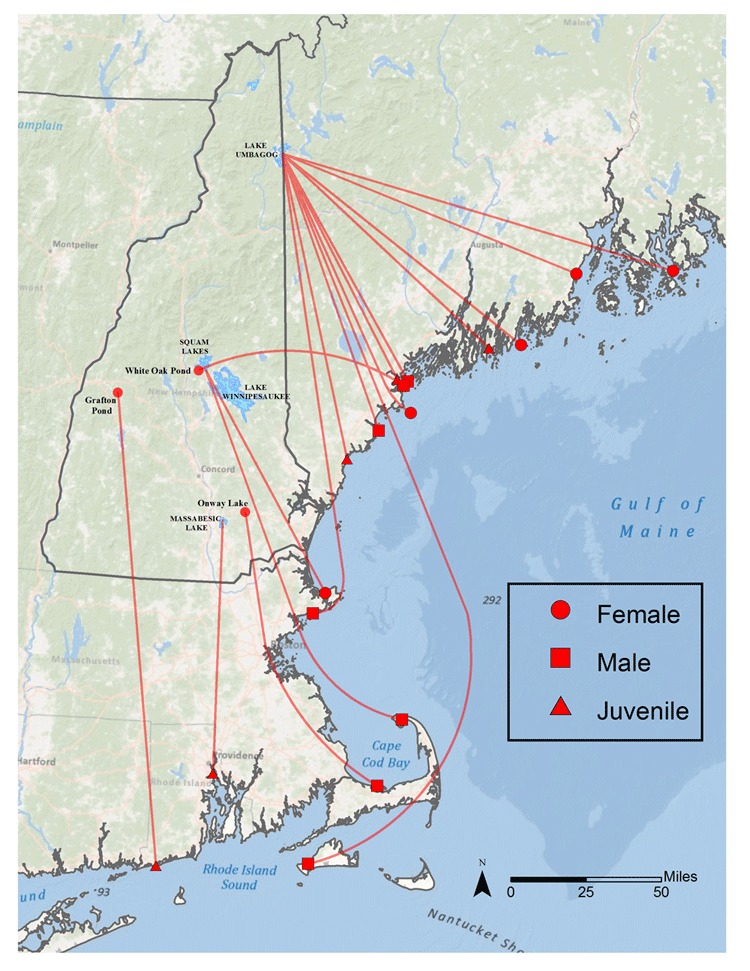The unprecedented decline of loons on Lake Umbagog, from 31 territorial pairs in 2000 to just 15 territorial pairs in 2002, led to a decision to implant satellite transmitters in two Lake Umbagog loons to track their migration and assess threats on their wintering grounds that might have contributed to the decline.
Results of these banding and satellite tracking efforts have revealed that loons escape the ice-in of New Hampshire’s lakes by wintering off the Atlantic coast from Maine to Rhode Island, and so remain in New England year-round.
LPC bands loons in cooperation with the Biodiversity Research Institute in Gorham, Maine.
LPC works with USGS to track loon migratory paths!
Check out their movement here.



